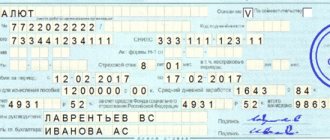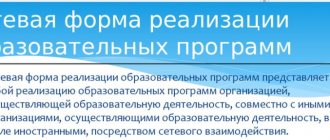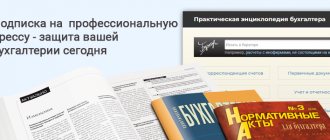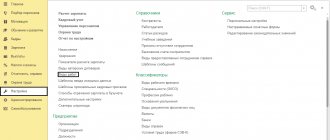FSS pilot project in 2022
Reform of the social insurance system began on July 1, 2011.
Previously, in all regions of the Russian Federation, benefits to insured persons were paid by the employer and the amount of insurance premiums accrued to them was reduced. But then the country began to gradually switch to direct payments of Social Security benefits. During the period 2012-2020. the rules for financing benefits in the pilot project were determined by Decree of the Government of the Russian Federation dated April 21, 2011 No. 294. The chronology of regions joining the project is as follows:
- Karachay-Cherkess Republic and Nizhny Novgorod region (from 01/01/2012 to 12/31/2020);
- Astrakhan, Kurgan, Novgorod, Novosibirsk, Tambov regions and Khabarovsk Territory (from 07/01/2012 to 12/31/2020);
- Republic of Crimea, Sevastopol (from 01/01/2015 to 12/31/2020);
- Republic of Tatarstan, Belgorod, Rostov and Samara regions (from 07/01/2015 to 12/31/2020);
- Republic of Mordovia, Bryansk, Kaliningrad, Kaluga, Lipetsk and Ulyanovsk regions (from 07/01/2016 to 12/31/2020).
- Republic of Adygea, Republic of Altai, Republic of Buryatia, Republic of Kalmykia, Altai and Primorsky territories, Amur, Vologda, Magadan, Omsk, Oryol, Tomsk regions and Jewish Autonomous Region (from 07/01/2022 to 12/31/2020);
- Kabardino-Balkarian Republic, Republic of Karelia, Republic of North Ossetia - Alania, Republic of Tyva, Kostroma and Kursk regions (from 07/01/2018 to 12/31/2020);
- Republic of Ingushetia, Republic of Mari El, Republic of Khakassia, Chechen Republic, Chuvash Republic, Kamchatka Territory, Vladimir, Pskov and Smolensk regions, Nenets and Chukotka Autonomous Okrug (from 01/01/2019 to 12/31/2020);
- Trans-Baikal Territory, Arkhangelsk, Voronezh, Ivanovo, Murmansk, Penza, Ryazan, Sakhalin and Tula regions (from 07/01/2019 to 12/31/2020);
- Komi Republic, Sakha Republic (Yakutia), Udmurt Republic, Kirov, Kemerovo, Orenburg, Saratov and Tver regions, Yamalo-Nenets Autonomous Okrug (from 01.01.2020 to 31.12.2020);
- Republic of Bashkortostan, Republic of Dagestan, Krasnoyarsk and Stavropol territories, Volgograd, Irkutsk, Leningrad, Tyumen and Yaroslavl regions (from 07/01/2020 to 12/31/2020).
Participation in the FSS pilot project was mandatory for all employers in the specified regions; they did not have the right to choose.
Since 2022, the pilot project has been extended to the entire territory of the Russian Federation. The financing rules are now established by Government Resolution No. 2375 dated December 30, 2020. From 2022, this procedure is planned to be made permanent.
Direct payment of benefits from the Social Insurance Fund: regulatory regulation
A new system for paying benefits to employees - directly from the Federal Social Insurance Fund of the Russian Federation - was launched in 2011.
The specifics of direct payments of benefits for compulsory social insurance in case of temporary disability and in connection with maternity in the constituent entities of the Russian Federation participating in the implementation of the Social Insurance pilot project were approved by Decree of the Government of the Russian Federation of April 21, 2011 No. 294.
The goal of the “Direct Payments” project is to improve the situation of insured citizens and policyholders in the implementation of activities related to the assignment and receipt of benefits within the framework of compulsory social insurance.
Transferring benefits to employees directly by the Fund provides guarantees to employees. Benefits within the framework of the direct payment mechanism are calculated and paid to insured persons directly by the territorial bodies of the Fund within strictly established periods of time by law, regardless of the financial situation of the employer.
As for the work of accountants, on the one hand, in the regions participating in the Social Insurance Fund project, accountants do not face the risk of falsifying certificates of incapacity for work, do not calculate the part of the benefit that the Social Insurance Fund pays directly to the employee, and do not find funds for timely payments. The employer must only provide the data necessary for the calculation. On the other hand, preparing and sending documents to the Social Insurance Fund does not significantly reduce the workload of accountants in pilot regions. And it is still necessary to calculate benefits, because part of the benefit is paid by the employer.
Now the direct procedure for paying benefits from the Social Insurance Fund is already successfully working in 39 constituent entities of the Russian Federation.
The capabilities of the 1C: Salary and Personnel Management 8 program, edition 3, for interaction with the Social Insurance Fund allow you to generate and send to the Fund all required documents in a timely manner and without errors, including if an electronic certificate of incapacity for work (ELN) is used.
Principle of the FSS pilot project
The essence of direct payments is that when an insured event occurs, the employee contacts the employer with an application and documents established by law, and the employer submits these documents to the Social Insurance Fund within 5 calendar days. The fund then makes a decision and pays the money to the insured employee to a personal bank account or by transfer within 10 calendar days. The first 3 days of illness are still paid for by the employer from the company’s funds, and the next days are paid for by a fund from its budget.
For more information, see our guide to direct benefit payments.
The register of information that is necessary for the payment of benefits of a certain type is filled out and submitted by policyholders in accordance with the order of the Social Insurance Fund of November 24, 2017 No. 579.
You can fill out the register in ConsultantPlus. Trial access to this and other system materials can be obtained free of charge.
The rules for filling out sick leave in the FSS pilot project are as follows:
- The sick leave form is used, approved by order of the Ministry of Health and Social Development dated April 26, 2011 No. 347n, or an electronic LN issued in the manner approved. by order of the Ministry of Health dated September 1, 2020 No. 925n.
- The paper form is very well protected. It can be filled out using a computer, which greatly simplifies the work of medical institutions. Some information in it is encrypted in the form of codes.
- The main feature of the form is the possibility of computer processing and machine readability.
Read about the features of calculating sick leave benefits in this article .
Scheme
the employee applies to the employer with an application for payment of the appropriate type of benefit, indicating the details to which the benefits are transferred (bank account or postal address), and the documents necessary for the assignment and payment of benefits (certificate of incapacity for work, birth certificate of the child and etc).
An employer with more than 25 employees, no later than 5 calendar days from the date the insured persons submit applications and documents necessary for the appointment and payment of the relevant types of benefits, submits a register of information in the established form in electronic form, certified by digital signature, to the Social Insurance Fund.
An employer with less than 25 employees, no later than 5 calendar days from the date the insured persons submit applications and documents necessary for the assignment and payment of the relevant types of benefits, submits the applications and documents received to it, as well as an inventory of the submitted applications and documents in the established form to the Social Insurance Fund ( in person or by mail) or submits a register of information electronically, similar to large employers.
Payment of benefits to an employee is carried out by the regional branch of the Fund by transferring benefits to the bank account specified in the application, or through the federal postal service organization, or another organization at the request of the employee within 10 calendar days from the date of receipt of the application and documents necessary for the assignment and payment of the corresponding type benefits, or register of information.
What advantages does the pilot project “Direct Payments” give to the Social Insurance Fund?
The main goal of the transition to direct payments for the Social Insurance Fund is the efficient use of budget funds. The adopted innovations allow the fund to check the legality of the accrual of benefits and the correctness of its calculation before the payment is made. This is an effective tool in the fight against fraudsters who forge certificates of incapacity for work. In addition, the “Direct Payments” project allows the Social Insurance Fund to optimize expenses by eliminating non-targeted payments that affect the balance of the budget.
The function of storing documents is not transferred to a government agency. As soon as the FSS decides to assign and pay benefits, the documents provided for verification are returned to the policyholder or the insured person if he applies to the fund directly.
And the transition to electronic sick leave will reduce the number and timing of checks of insurance cases for temporary disability, pregnancy and childbirth, will reduce the loss of time of doctors and employers filling out certificates of incapacity for work, will help to avoid delays due to errors in filling out forms, and will also significantly reduce cases of insurance fraud.
A ready-made solution from ConsultantPlus will help you organize your work with electronic sick leave. Get trial access to the system for free and proceed to expert recommendations.
Advantages of the new benefit payment system for policyholders and insured persons
For policyholders, the FSS pilot project carries certain bonuses. Employers no longer need to spend their budget on paying the full amount of benefits (except for paying for the first 3 days of illness) and then wait for reimbursement from the Social Insurance Fund.
Read more about benefits in connection with maternity and childhood in the articles:
- “When is sick leave issued for pregnancy and childbirth?”;
- "St. 256 Labor Code of the Russian Federation: questions and answers";
- “How is sick leave paid for child care.”
Insured citizens of the Russian Federation can expect from the FSS pilot project protection from unscrupulous employers who delay or do not pay benefits at all, since payment is made directly by the territorial body of the fund. If the employer has stopped conducting business or it is impossible to establish his actual location, the insured person can independently, with the documents established by law, apply for payment of insurance coverage to the territorial body of the Social Insurance Fund at the place of registration of the employer. Innovations also ensure that benefits are calculated correctly, disputes with the employer are reduced and there is no dependence on the employer.
You can find out what documents to submit for the FSS pilot project in 2021 in the Ready-made solution from ConsultantPlus, having received free trial access to the system.
Vacation for spa treatment
Leave for sanatorium-resort treatment, as before, is registered in the document “Accrual of leave to employees of organizations.” As part of the pilot project, if additional leave is selected in the document, for which it is indicated that it corresponds to the benefit for payment of additional leave for sanatorium-resort treatment by the insured, an additional tab “Application for payment of benefits” appears in the document, using the button on which It is possible to generate a printed application form, filled out according to the data available on the tab.
Payment for additional days off to care for disabled children within the framework of the pilot project is made by the employer, as before, using the document “Payment based on average earnings.” Formation of an application in the form of Appendix No. 7 to the FSS order No. 335 dated September 17, 2012 is carried out using the document “Application to the FSS for reimbursement of payments to parents of disabled children.”
Social benefits for funerals are accrued by the employer; in the program, the accrual is made by the document “Accrual of one-time benefits at the expense of the Social Insurance Fund” (in the program the benefit is called “In connection with death”). As part of the pilot project, the formation of an “Application for reimbursement of expenses for the payment of social benefits for burial” is supported in the form of Appendix No. 6 to the Order of the Social Insurance Fund dated September 17, 2012 No. 335. The application is generated using the document “Application to the Social Insurance Fund for reimbursement of funeral expenses.”
Results
The new system of interaction between the Social Insurance Fund and policyholders and the insured is aimed at optimizing document flow, transitioning to electronic data exchange both within the government apparatus and with third-party participants (medical institutions, policyholders), as well as strengthening control over the examination of temporary disability.
The result of modernization should be timely and correctly calculated direct payments under the Social Insurance Fund pilot project of benefits to insured citizens without unnecessary bureaucratic delays.
You can find more complete information on the topic in ConsultantPlus. Free trial access to the system for 2 days.
Workplace to simplify document flow with the Social Insurance Fund for direct payments
The 1C:ZUP 8 program implements all the necessary documents and reports for participants in the FSS pilot project for the payment of benefits directly by the Fund, including:
- employee statements,
- registers of information and the possibility of presenting them electronically in current formats,
- possibility of forming and printing on paper.
A specialized workplace to simplify the organization’s document flow within the framework of the FSS pilot project is provided in the menu Reporting, certificates - Benefits at the expense of the FSS (Fig. 2).
Rice. 2. Workplace for interaction with the Social Insurance Fund on direct payments
Clicking the Create sick leave button in the program opens a new document, which, in addition to the standard bookmarks, contains the FSS Pilot Project bookmark (Fig. 3).
Rice. 3. Document “Sick leave” for an organization participating in the pilot project
If an organization participates in the “Electronic Sick Leave” project, then this sick leave data will be filled in from the FSS server automatically by clicking the Get data from the FSS button.
What is the system of interaction with the FSS for the exchange of electronic tax information and how the functionality works in 1C programs, read on the website.
| 1C:ITS For more information about the exchange of electronic certificates of incapacity for work with the Social Insurance Fund, including on receiving data from the Social Insurance Fund, entering the “Sick Leave” document into “1C: Salaries and Personnel Management 8” (rev. 3), and about creating and sending the electronic sick leave register to the Social Insurance Fund, read in reference book “Personnel accounting and calculations in 1C programs” section “Personnel and remuneration”. |
On the FSS Pilot Project tab, following the Filling in Data link, you must enter additional information required in the ENL register. Data that is already in the program is entered automatically.
The employee’s application for payment of benefits must be submitted to the Social Insurance Fund office. It can be prepared right there using the link Enter an employee’s application for payment of benefits.
Application registers are created using the Create registers button. The generated registers can be sent electronically to the FSS directly from the program using the 1C-Reporting service.








